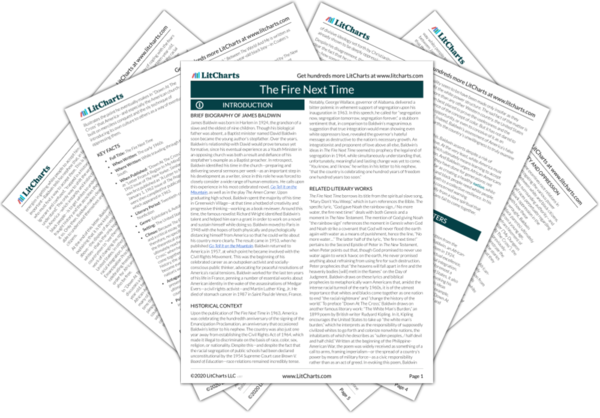Authority and Oppression
The Fire Next Time examines race relations in America by interrogating the various power dynamics at play between white and black citizens. Baldwin makes it clear that norms surrounding authority—and the narratives that Americans of all races perpetuate regarding its influence—sustain a pattern of black oppression in the United States. Concerning himself with how these longstanding beliefs about power are wrought, Baldwin demonstrates that parents (including black parents) ultimately teach their children a model of…
read analysis of Authority and OppressionHistory and Religion
The Fire Next Time was published in 1963, 100 years after the signing of the Emancipation Proclamation. The early sixties were a time of heated debate regarding racial segregation, and much of that debate was inflected by religion. Many Christian groups—such as the Southern Christian Leadership Conference, to name just one—were foundational to the Civil Rights Movement, basing their calls for equality within the framework of Christianity’s celebration of love and kindness. On the other…
read analysis of History and ReligionLove
Baldwin frames love as something hopeful and restorative, a means by which America might achieve something like unity. In “My Dungeon Shook,” he tells James: “We have not stopped trembling yet, but if we had not loved each other none of us would have survived.” Herein lies the notion that compassion and camaraderie present perhaps the only way to survive the long history of injustice and suffering at the hands of bigots. Baldwin takes…
read analysis of Love
Fear
Fear is laced throughout The Fire Next Time. In fact, it lurks behind important elements of the three previous themes: authority, religion, and love. Baldwin concerns himself in particular with how fear can act as a divisive catalyst, something that drives white and black people apart and supports racist patterns.
When Baldwin sought out the Christian church as a teenager, he did so for fear of the “whores and pimps and racketeers on the…
read analysis of Fear






